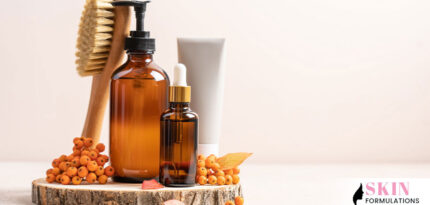Makeup Secrets for Hiding Acne and Creating a Flawless Complexion

Introduction
Do you suffer from acne? Do you feel like you’ve tried every trick in the book to hide it, but nothing seems to work? If so, then this is the guide for you! We’re about to show you how to expertly cover up any type of acne, from whiteheads and blackheads to cysts. You’ll discover which concealers are best for each type of blemish, as well as tips for prepping your skin before applying makeup and setting powders that will keep your makeup in place all day. Say goodbye to embarrassing breakouts and hello to flawless skin – read on to learn more!
How to Hide Whiteheads and Blackheads?
- When dealing with whiteheads and blackheads, it’s important to use a lightweight concealer that won’t clog your pores. Look for oil-free formulas with added ingredients like vitamin C or salicylic acid that can help reduce redness and inflammation.
- To get the best coverage, choose a shade of concealer that is one or two shades lighter than your skin and use a damp beauty sponge to blend it seamlessly.
- After applying the concealer set it in place with a pressed powder that matches your complexion, this will help keep your coverage intact all day long and prevent other makeup products from settling into your blemishes.
- You may need to do touch-ups throughout the day to keep your coverage looking fresh; keep a pressed powder on hand for quick and easy touch-ups. With these tips, you’ll be able to easily cover up whiteheads and blackheads without any hassle!
Suggestions for Masking Cysts
- Cysts can be the most difficult type of acne to cover, so it’s important to invest in a high-coverage concealer that won’t crease or slide off throughout the day. Look for creamy formulas that contain vitamin E or aloe vera to help reduce inflammation and redness.
- Achieve maximum coverage and a natural look by selecting the concealer shade that best matches your skin tone. Gently apply with either a damp beauty sponge or your fingertips in thin layers until you have reached your desired effect.
- To ensure maximum and long-lasting coverage set the concealer in place with a translucent powder. This will help keep your coverage intact all day and keep any excess oils at bay.
- To finish off, apply a light dusting of powder blush or bronzer to give your skin a natural-looking flush of color. With these tips, you’ll be able to easily cover up cysts and achieve flawless-looking skin!
Tips For Covering Up Hormonal acne.

- Hormonal acne can be tricky to cover up since it is often deep and inflamed. To help reduce redness and inflammation, use a green-tinted primer before applying your concealer. This will neutralize redness from the start and provide a smoother base for makeup application.
- Invest in a long-wearing, full-coverage concealer that won’t crease or slide off throughout the day; look for creamy formulas with added ingredients like tea tree oil or witch hazel that can help soothe skin and reduce inflammation.
- Choose a hue of concealer that is as close to your skin tone as possible and blend it into the areas, you wish to cover using either your fingertips or a damp beauty sponge.
- Set your concealer in place with a pressed powder that matches your complexion after applying it; this will help keep your coverage intact all day and prevent other makeup products from settling into your blemishes.
Tips for Masking Hyperpigmentation
- To cover up hyperpigmentation, use a color-correcting primer to even out the skin tone and provide a smooth base. Look for primers that contain brightening ingredients like vitamin C or niacinamide to help reduce dark spots and discoloration.
- Follow up with a full-coverage concealer in a shade that matches your skin tone as closely as possible; try creamy formulas with added moisturizing ingredients like hyaluronic acid or squalene to help nourish the skin while providing intense coverage.
- Set your concealer in place with a lightweight pressed powder that matches your complexion after applying it; this will help keep your coverage intact all day and prevent other makeup products from settling into any blemishes.
- For the perfect finish, lightly apply a touch of bronzer or blush to add natural-looking color to your complexion. With these simple tricks, you can effortlessly conceal hyperpigmentation and get that glowing skin you’ve always wanted!
Tips on How to Cover Up Blemishes
- Before applying any makeup, prep your skin by washing it with a gentle cleanser and applying a moisturizer to keep it hydrated throughout the day.
- To cover up blemishes, use a full-coverage concealer in the same shade as your skin tone; look for creamy formulas with added moisturizing ingredients like hyaluronic acid or squalene to help nourish the skin while providing intense coverage.
- Apply concealer with an eyeshadow brush to any areas of redness or discoloration, blending until even and natural-looking.
- Once you have finished concealing, set the area into place with a thin layer of translucent powder; this will help cover coverage and prevent your makeup from smudging or melting away.
- Finally, use a fluffy brush to lightly dust over any remaining concealer with a bit of pressed powder that matches your skin tone; this will help even out the area and create a natural-looking finish.
Will makeup worsen your skin condition?
No, makeup will not worsen your skin condition when applied properly. However, it is important to note that using the wrong type of product for your skin type and applying it incorrectly can lead to clogged pores and further irritation. To prevent this from happening, make sure to use skin-care products designed specifically for your skin type and always cleanse thoroughly before and after you apply makeup. Additionally, look for formulas made with gentle ingredients like hyaluronic acid or niacinamide that won’t aggravate any existing issues. Lastly, be sure to remove all makeup at the end of the day to give your skin a chance to breathe and recover overnight. With these tips in mind, you can use makeup without worrying about making your skin condition worse. So, put on your makeup and enjoy a stunning look that lasts all day!
The best and worst makeup for acne-prone skin
The best makeup for acne-prone skin is the kind that is noncomedogenic, lightweight, and offers sheer to light coverage.
- When looking for a foundation, choose one that is oil-free, contains zinc oxide or titanium dioxide to help protect against sun damage, and has salicylic acid or tea tree oil to reduce inflammation.
- To cover up blemishes, use a full-coverage concealer in the same shade as your skin tone; look for creamy formulas with added moisturizing ingredients like hyaluronic acid or squalene to help nourish the skin while providing intense coverage.
- For powder products, avoid any with heavy fillers and opt instead for lightweight mineral powders that won’t clog pores or irritate sensitive skin.
- When choosing eye makeup, pick formulas that are non-irritating and hypoallergenic, and look for eye shadows that are made with natural ingredients like mineral pigments.
- Opt for a lip product that is moisturizing and hydrating to protect the delicate skin on your lips from drying out or becoming irritated; creamy formulas with added vitamins, antioxidants, and SPF are ideal. The worst makeup for acne-prone skin includes any products that are greasy, heavy, or comedogenic, as these can cause clogged pores, which may lead to breakouts.
Furthermore, avoid glittery eyeshadows and lip glosses, as they can be difficult to remove completely and might cause further irritation.
Tips for removing makeup properly.
Removing makeup properly is just as important as applying it, as leaving it on overnight can clog pores and lead to irritation. Here are a few tips to help you remove your cosmetics with ease:
- Start by using an oil-based cleanser or micellar water to break up the makeup without tugging at the skin; then, massage the product into your face until all traces of makeup have been dissolved.
- Next, use a gentle foaming cleanser to thoroughly rinse away dirt and oils; make sure not to scrub too hard as this may irritate the skin.
- For heavy eye shadows or waterproof mascara, apply a micellar water or makeup remover to the area first and let it sit for a few minutes before wiping away; this will help break up any stubborn products.
Finally, use a toner and moisturizer to restore your skin’s natural pH balance and keep it hydrated throughout the night. These simple steps will keep your skin clean and healthy throughout the day!
Conclusion
When using makeup, it is important to choose products designed specifically for your skin type and make sure they are non-comedogenic and lightweight. Additionally, always remove all makeup thoroughly at the end of the day with an oil-based cleanser or micellar water and follow up with a gentle foaming cleanser. Doing so will help keep your pores unclogged, reduce irritation, and restore your skin’s natural pH balance for healthier-looking results! By following these tips, you can confidently wear makeup, knowing that your skin is being taken care of.
Deprecated: Function WP_Query was called with an argument that is deprecated since version 3.1.0!
caller_get_posts is deprecated. Use ignore_sticky_posts instead. in /home/healthwebmagazin/skinformulations.com/wp-includes/functions.php on line 6121






